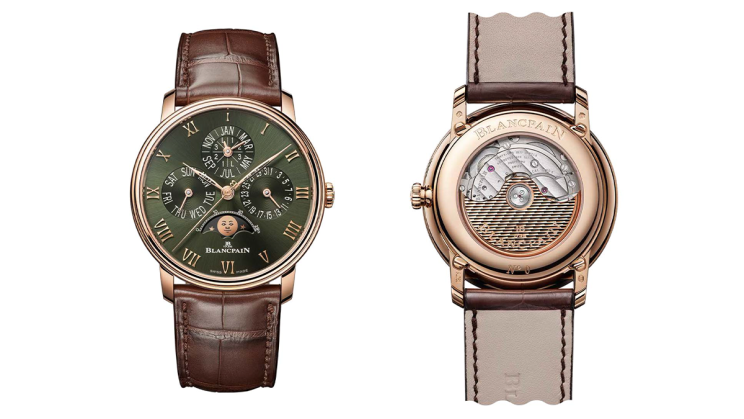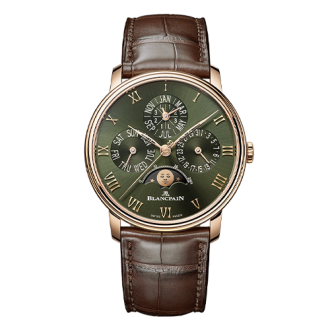The rise of mechanical watchmaking in Switzerland is not easily attributed to one specific cause. I used to remark (only half jokingly) that we primarily have bad weather to thank for Swiss watches. We’re all familiar with the tale of how the harsh and isolating winters of the Vallée de Joux — the cradle of complicated Swiss watchmaking — obliged its inhabitants to turn to watchmaking during the colder months in order to eke out a living. It’s less likely that watchmaking, a skilled métier simultaneously meticulous and repetitive, would have taken hold in a region with milder, pleasanter climes. Then, of course, some credit must go to Francis I, whose religious policy kickstarted the mass exodus of Huguenots from France and helped establish Switzerland as a safe haven for refugees of the Protestant faith. These refugees were predominantly tradesmen and craftsmen with high levels of education and training, for instance, watchmakers.
One factor doesn’t always get acknowledged, and while it may seem like a minor contributor to Switzerland’s horological hegemony, I think it’s one of those tiny details that ends up becoming a huge deal. We’ve already factored in the impact of the brutal winters characteristic of the Vallée de Joux — but there is also the matter of its forests. Before watchmaking came to the region, the primary industries found in the Vallée de Joux were steelworks and the supporting enterprise of charcoal production, fueled by the abundant woodlands surrounding the area. Numerous histories of the Vallée de Joux emphasise the unyielding nature of the terrain, describing it as un sol ingrat or une terre ingrate. Rather than agriculture or animal husbandry, economic activity therefore centred on sophisticated crafts that were sustained by the metalworking trades and natural resources (iron ores and wood) available locally.
There is a direct line of causality to be drawn between the production of high-quality steel and charcoal in the Vallée de Joux, the accumulation of expertise in metalworking, and the rapid adoption of watchmaking as a replacement activity after forestry protections enacted between 1709 and 1762 throttled the region’s sawmills and iron foundries. This sequence of events centuries ago still resonates in 2024. We see its continued effects today in the existence of the grand houses of mechanical watchmaking and the vast spruce forest of Risoud, greatest survivor of the ecological ravages wrought by the charbonniers (charcoal producers).
I know what you’re thinking. “Thanks for the history lesson, Suzanne, but what does this have to do with the watch pictured at the top of this page?” My dear WorldTempus family, this little detour into the obscure annals of the 18th-century Jurassien economy has everything to do with the Blancpain Villeret Quantième Perpétuel and its new verdant green dial.

We don’t have to go into what a perpetual calendar does. If you’ve made it this far into the article, you’re probably not a watchmaking novice. What’s important here is that it’s a mechanical high complication, a métier supremely adapted to the Vallée de Joux, whose natives were described by historian Daniel Aubert as possessing a talent for precise and replicative handcraft that naturally lent itself to the finer aspects of watchmaking (“la dextérité […] dans les gestes précis et répétés […] favorisant l’éclosion des talents horlogers”).
We must also remember that Blancpain was founded in 1735, making it the only brand currently situated in the Vallée de Joux (even though its birthplace, Villeret, is located in a different part of the Swiss Jura) that was in existence when the region’s economic activity began inexorably to swerve towards the horological domain. The dial of the new Blancpain Villeret Quantième Perpétuel is the same hue as the evergreen coniferous trees that have dominated the arboreal landscape since the large-scale deforestation of past centuries decimated hardwood tree growth. It is a green that symbolises the beginnings of horology in the Vallée de Joux, with an underlying message of protecting the things that are precious to us (traditional skills, the natural environment).

An indication of the moon phase can be found at the 6 o’clock position, reinforcing the link between Blancpain’s watchmaking expertise and its core values of preserving horological patrimony. Classical watchmaking was under existential threat after the introduction of the mass-produced quartz watch in 1969, balancing precariously on the edge of extinction like the woodlands of the Vallée de Joux a hundred years before. Author and historian Samuel Aubert (they all have the same family names over there) foreshadowed the grave peril and despair faced by the watch industry in his 1928 essay on the forests of his beloved home — “Plus un arbre debout ! Rien que les ruines, des pierrailles mises à nu par la pluie, le vent ou le gel. Quoi, l’image de la plus absolué dénudation !” In the face of this crisis, Blancpain became a standard bearer of mechanical watchmaking’s continued relevance and resurgence in the following decades, with the moon phase display closely identified with the brand’s mission during this time.
What can we learn from all this? Like the waxing and waning moon, we may sometimes lose sight of what’s important to us, but there are always those who will make it their life’s work to preserve the treasures of this world. And there may be any number of brands out there who can make a perpetual calendar with a green dial, but there is no one who can do it quite like Blancpain.








